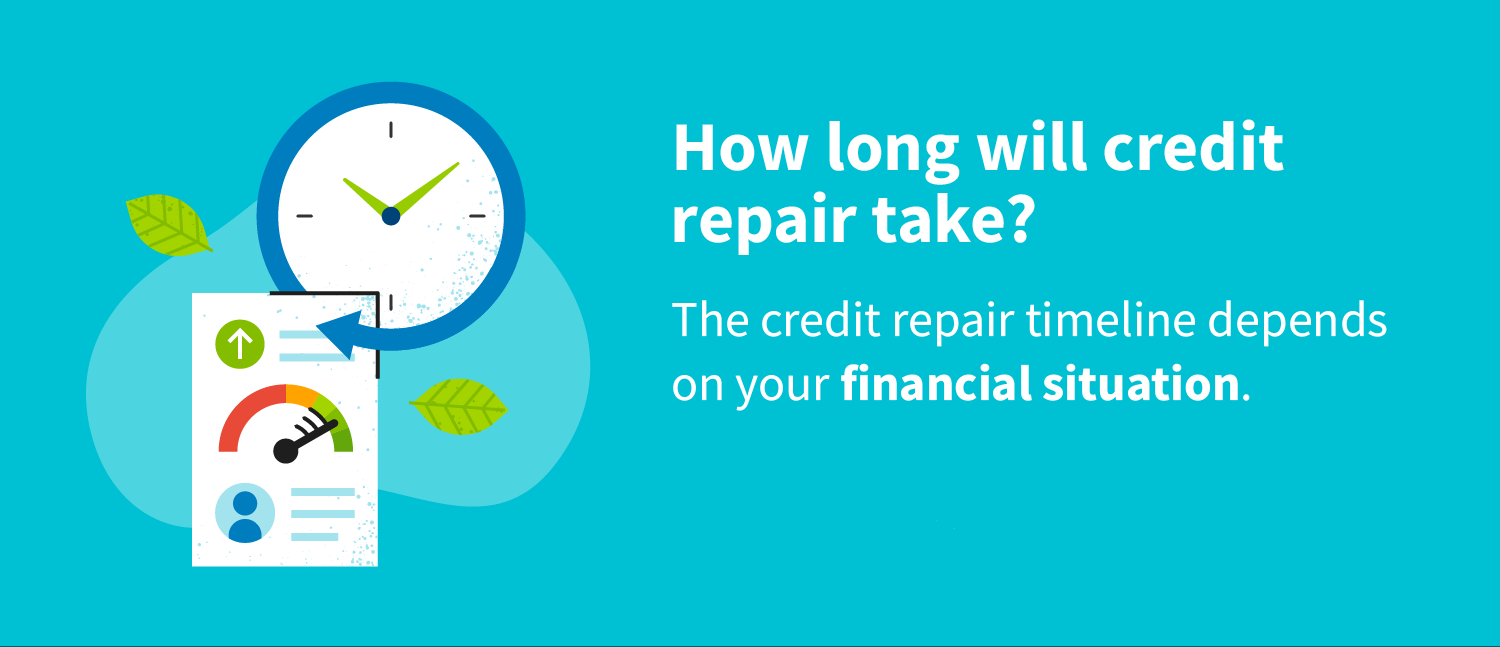
Repairing your credit can feel like a daunting process, and one of the most common questions people ask is: How long will it take to see results? The answer depends on several factors, such as the complexity of your credit issues and the steps you take to address them. This guide will walk you through what to expect when repairing your credit and offer tips to speed up the process.
Factors That Impact the Credit Repair Timeline
The time it takes to see improvements in your credit score depends on several factors:
- Type of Negative Items on Your Report:
- Minor issues like errors or late payments can be resolved in a few months.
- Major issues such as bankruptcies or charge-offs may take longer to recover from.
- Your Current Credit Score:
- If you have a low score (under 600), it can take more time to build it back up.
- Small improvements may show faster if your credit history isn’t heavily damaged.
- Your Actions:
- Consistently making on-time payments, reducing debt, and disputing errors will help speed up the process.
How Long Does It Take to Remove Negative Items?
| Negative Item | Removal Timeline |
|---|---|
| Inaccurate/Disputed Item | 30 to 45 days after a dispute with the credit bureaus |
| Late Payments | Impact fades after 6-12 months; drops off after 7 years |
| Collections | 3-6 months if negotiated or paid in full; 7 years if not |
| Charge-Offs | Stays on for 7 years but lessens over time with positive activity |
| Bankruptcy | Chapter 7: 10 years; Chapter 13: 7 years |
Disputing errors or removing outdated information can take 30 to 45 days, as credit bureaus must investigate your claims within this timeframe. Other negative items may take several years to stop affecting your score completely, but you don’t have to wait that long to see improvements.
When Can You Expect to See Credit Score Improvements?
1–3 Months
- Disputing Errors: If errors on your report are successfully removed, you could see an increase within 30 to 45 days.
- Paying Down Credit Card Debt: Reducing your credit utilization ratio can lead to immediate improvements, often within the next billing cycle.
- Becoming an Authorized User: If added to a well-managed account, your credit score can improve within 30 days.
3–6 Months
- Consistent On-Time Payments: A track record of timely payments will start positively influencing your score after 3–6 months.
- Paying Off Collections: Some creditors may agree to remove the collection record upon full payment (a practice known as “pay-for-delete”), which can boost your score.
6–12 Months
- Improving Payment History: Regular payments over this period will help your score rise steadily.
- Using a Secured Credit Card: Proper use of a secured card over 6–12 months will establish a positive credit history.
How to Speed Up the Credit Repair Process
While credit repair takes time, the following tips can help you see results faster:
- Review Your Credit Reports Regularly:
Visit AnnualCreditReport.com to ensure there are no errors holding back your progress. - Dispute Errors Immediately:
If you find mistakes, file disputes with the credit bureaus as soon as possible. - Pay Off Credit Card Balances Strategically:
Focus on reducing balances to keep your credit utilization under 30%. - Negotiate with Creditors:
Work with creditors to arrange payment plans or request goodwill adjustments for past late payments. - Use Tools Like Experian Boost or Rent Reporting Services:
These tools can add utility bills or rent payments to your credit history, improving your score faster.
Long-Term Credit Repair Outlook
Even after your score begins to improve, maintaining healthy financial habits is crucial. Building and sustaining good credit is a long-term game. Here’s how:
- Continue Paying Bills on Time: Your payment history accounts for 35% of your credit score, so never miss a due date.
- Keep Credit Utilization Low: Aim to use no more than 30% of your credit limit.
- Limit Hard Inquiries: Only apply for credit when necessary to avoid multiple hard inquiries, which temporarily lower your score.
Final Thoughts
Credit repair is a process that requires patience, persistence, and smart financial decisions. While small improvements can appear within a few months, it may take a year or more to fully recover from significant credit issues.
By taking proactive steps—such as disputing errors, paying off debt, and building positive credit—you’ll be on the path to a healthier credit profile. Every improvement, no matter how small, gets you closer to your financial goals.
At JDP Credit Solutions, we offer resources and solutions to guide you through your credit repair journey. Reach out to learn how we can help you take control of your financial future.
With the right strategies and consistent effort, your credit score will start reflecting the progress you’ve made—and financial opportunities will follow. Remember: good credit isn’t just a score; it’s a tool to unlock your financial potential!
